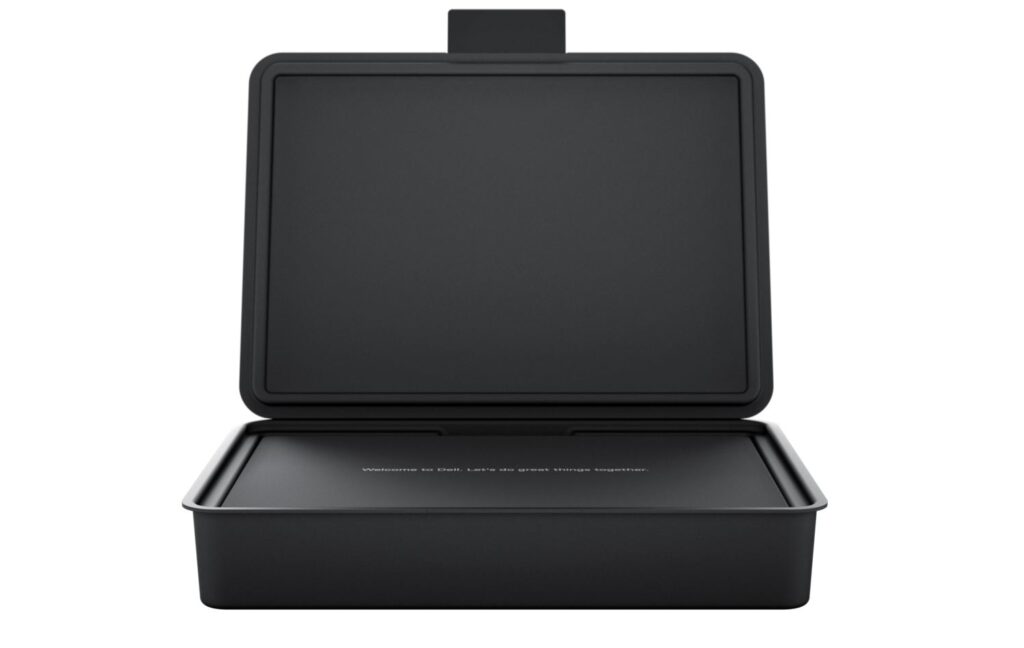
Here’s how the Dell Latitude 5000 series laptops set new standards for sustainability
Only until recently has there been any significant effort in championing sustainability efforts from tech manufacturers which is somewhat of a sobering fact.
The vast majority of the tech that we purchase from smartphones all the way to laptops generates a heck of a ton of waste. From the packaging down to the materials they are made from, many of these products and their packaging isn’t even biodegradable and would sit in landfills for years, if not decades to come or end up somewhere in the oceans after being discarded.
And let’s not get started with all the horror clips of plastics clogging up waterways, floating around on the high seas and plastic bags accidentally getting gobbled up by hapless turtles.
With their eye on the horizon and their leadership position in computing, Dell Technologies has sought to champion a more responsible approach to sustainability over the last several years by introducing sustainable materials in their packaging and their products to minimise environmental impact, optimise their carbon footprint and generally be kinder to the planet.
Dell has put their money where their mouth is and have championed tangible change with their Progress Made Real 2030 goals that include the deployment of the world’s largest global solar panel for one of their facilities in Malaysia, the showcasing of their Concept Luna laptop which takes laptop repairability to new heights and much more.
While much has been done, Dell is kicking things up a notch to accelerate progress on their ambitious 2030 packaging moonshot goals by introducing 100% recycled or renewable packaging in their products that are also 100% recyclable for all new Latitude series laptops including the prestigious new Latitude 9430, Precision mobile workstations and their vaunted XPS range of laptops.
This bold move includes using paper alternatives as opposed to the usual plastic bags to pack accessories and gear like chargers, cables and the like, inner trays made of sustainably sourced bamboo and sugarcane fibre-based pulp as well as paper-based tape to replace plastic tape to wrap and protect products.
“Dell’s purpose is to create technology that drives human progress. We’re inspired by the opportunity to change things for the better for our future generations. This is clear in the new ways we’re designing and packaging our products to help reduce environmental impact, waste and emissions,” said Rahul Tikoo, senior vice president, Client Product Group, Dell Technologies. “As we build on our circular leadership, we’re taking this a step further – continually examining, re-examining and reconsidering every step of the product lifecycle to deliver even more sustainable products in the future.”
Dell’s quest doesn’t stop with just more eco-friendly packaging as their latest Dell Latitude 5000 series laptops now implement more recyclable and renewable material in its manufacture and design than ever before.

The redesigned sustainable packaging for the Dell Latitude 5000 series which will be extended to other Dell product lines like their XPS range
What sustainable materials are used in the Dell Latitude 5000 series
For those savvy with Dell’s product line-up, their Latitude 5000 series are one of their highest volume laptop lines and sustainability efforts stack up rapidly at scale with the sheer number of Latitude 5000 series laptops they sell. While one ecologically friendlier laptop sold isn’t much, thousands of them make a difference. According to Dell, the new Latitude 5000 series has the following sustainability improvements:
- A laptop lid made from 71% recyclable and renewable materials including tree-based bioplastic upcycled from the paper making industry (21%), reclaimed carbon fiber (20%) and post-consumer recycled plastic (30%). By focusing on the second heaviest part of the device – the lid – Dell can make a larger sustainability impact, helping reduce the product’s carbon, water and energy footprint.
-
- The base of the system is created with reclaimed carbon fiber (20%) and new bio-based rubber feet made from castor bean oil (39%). This renewable material reduces reliance on petroleum-based materials.
- This series also marks an important milestone in Dell’s existing use of ocean-bound plastics, expanding use beyond packaging into products. The Latitude 5000 series features ocean-bound plastics in the fan housing (28%).
- Protecting the product, the Dell Latitude 5000 series features packaging made from 100% recycled or renewable materials – all of which is 100% recyclable.

To wit, Dell’s efforts have been recognised by the Environmental Protection Agency (EPA) for 8 consecutive years and have just earned the EPA’s Sustainable Materials Management Awards where Dell’s implementation of bio-based plastics earned them a Cutting Edge Champion Award, their tier recycling services a Gold Recycling Award and their closed-loop aluminium pilot process snagging a Sustained Excellence Award. For more on Dell’s efforts, check out their official page at https://www.dell.com/en-my/blog/tags/social-impact/
